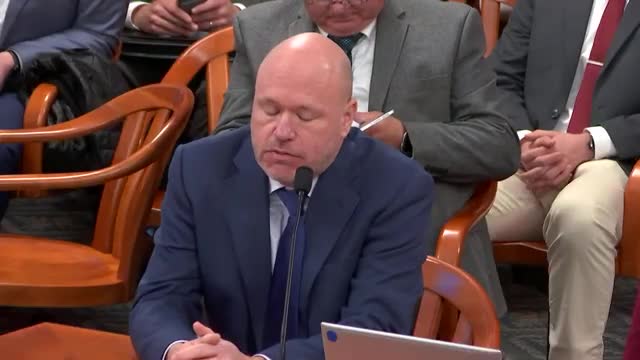Michigan report reveals teacher shortages disproportionately affect low-income schools
February 19, 2025 | 2025 House Legislature MI, Michigan
This article was created by AI summarizing key points discussed. AI makes mistakes, so for full details and context, please refer to the video of the full meeting. Please report any errors so we can fix them. Report an error »

The Michigan House of Representatives meeting on February 19, 2025, spotlighted the pressing issue of teacher shortages, particularly in schools serving high concentrations of low-income students. The discussion revealed a stark disparity in teacher quality and availability across different districts, emphasizing the urgent need for policy changes to address these inequities.
A key focus of the meeting was the impact of the teacher shortage on students in poverty-stricken areas. Research presented indicated that teachers significantly influence student outcomes, with their effectiveness being two to three times more impactful than any other in-school factor. However, the distribution of qualified teachers is uneven, exacerbating opportunity gaps that lead to achievement disparities in reading and math.
The Opportunity Index, a funding mechanism introduced in 2023, was highlighted as a potential solution. It aims to allocate additional resources to districts with higher percentages of economically disadvantaged students. While the index categorizes districts into six bands based on poverty levels, the funding is not yet fully realized, leaving many districts without the necessary support.
The meeting also addressed the quality of teachers in these districts. Data showed that nearly one-third of teachers in the highest poverty areas are in their first year of teaching, compared to only 16% in wealthier districts. Conversely, experienced teachers—those with at least ten years in the classroom—are significantly underrepresented in high-poverty areas, where only about 25% of teachers fall into this category.
Moreover, the reliance on temporary or emergency credentials was alarming. Nearly 40% of teachers in the highest poverty districts hold such credentials, compared to just 2% in the wealthiest areas. This raises concerns about the preparedness and effectiveness of educators in these critical environments.
The meeting concluded with a call for comprehensive policy solutions to ensure that all students, regardless of their socioeconomic status, have access to qualified and experienced teachers. The disparities highlighted during the session underscore the need for immediate action to bridge the educational gaps faced by Michigan's most vulnerable students.
A key focus of the meeting was the impact of the teacher shortage on students in poverty-stricken areas. Research presented indicated that teachers significantly influence student outcomes, with their effectiveness being two to three times more impactful than any other in-school factor. However, the distribution of qualified teachers is uneven, exacerbating opportunity gaps that lead to achievement disparities in reading and math.
The Opportunity Index, a funding mechanism introduced in 2023, was highlighted as a potential solution. It aims to allocate additional resources to districts with higher percentages of economically disadvantaged students. While the index categorizes districts into six bands based on poverty levels, the funding is not yet fully realized, leaving many districts without the necessary support.
The meeting also addressed the quality of teachers in these districts. Data showed that nearly one-third of teachers in the highest poverty areas are in their first year of teaching, compared to only 16% in wealthier districts. Conversely, experienced teachers—those with at least ten years in the classroom—are significantly underrepresented in high-poverty areas, where only about 25% of teachers fall into this category.
Moreover, the reliance on temporary or emergency credentials was alarming. Nearly 40% of teachers in the highest poverty districts hold such credentials, compared to just 2% in the wealthiest areas. This raises concerns about the preparedness and effectiveness of educators in these critical environments.
The meeting concluded with a call for comprehensive policy solutions to ensure that all students, regardless of their socioeconomic status, have access to qualified and experienced teachers. The disparities highlighted during the session underscore the need for immediate action to bridge the educational gaps faced by Michigan's most vulnerable students.
View full meeting
This article is based on a recent meeting—watch the full video and explore the complete transcript for deeper insights into the discussion.
View full meeting
